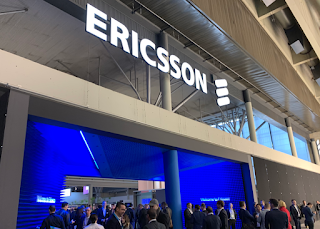Ericsson introduced standalone 5G New Radio (NR) software to expand 5G deployment options. Ericsson already supports 5G non-standalone (NSA) 5G NR. The new standalone 5G NR software can be installed on existing Ericsson Radio System hardware. Coupled with Ericsson’s 5G dual-mode Cloud Core solutions, the new products are aimed at opening new business opportunities for service providers – especially having established an architecture that facilitates agility, provides advanced support for network slicing and enables the speedy creation of new services.
Ericsson has also launched Inter-band NR Carrier Aggregation – a new software feature that extends the coverage and capacity of NR on mid- and high bands when combined with NR on low bands. This will improve speeds indoors and in areas with poor coverage.
 Two new Massive MIMO radios have also been added to the Ericsson Radio System mid-band portfolio: AIR 1636 for wider coverage which provides optimized performance on longer inter-site distances; and AIR 1623 for easy site build with minimal total cost of ownership.
Two new Massive MIMO radios have also been added to the Ericsson Radio System mid-band portfolio: AIR 1636 for wider coverage which provides optimized performance on longer inter-site distances; and AIR 1623 for easy site build with minimal total cost of ownership.
Ericsson is also introducing an edge computing solution to enable service providers to offer 5G services such as augmented reality and content distribution at low cost, low latency, and high accuracy. The new Ericsson Edge NFVI (Network Functions Virtualization Infrastructure) is part of the end-to-end managed and orchestrated distributed cloud architecture, which makes it possible to distribute workloads, optimize the network and enable new services in the cloud.
In addition, Ericsson is launching the Ericsson partner VNF Certification Service, a partner certification program for virtual network functions (VNF). The service is open to all VNF vendors and grants a certification on the Ericsson NFVI platform using Ericsson Labs. This will create an ecosystem with a shorter time-to-market for working with partners and applications.
Fredrik Jejdling, Executive Vice President and Head of Business Area Networks, Ericsson, says: “We continue to focus our efforts on helping our customers succeed with 5G. These new solutions will allow them to follow the 5G evolution path that fits their ambitions in the simplest and most efficient way.”
Ericsson has also launched Inter-band NR Carrier Aggregation – a new software feature that extends the coverage and capacity of NR on mid- and high bands when combined with NR on low bands. This will improve speeds indoors and in areas with poor coverage.
 Two new Massive MIMO radios have also been added to the Ericsson Radio System mid-band portfolio: AIR 1636 for wider coverage which provides optimized performance on longer inter-site distances; and AIR 1623 for easy site build with minimal total cost of ownership.
Two new Massive MIMO radios have also been added to the Ericsson Radio System mid-band portfolio: AIR 1636 for wider coverage which provides optimized performance on longer inter-site distances; and AIR 1623 for easy site build with minimal total cost of ownership.Ericsson is also introducing an edge computing solution to enable service providers to offer 5G services such as augmented reality and content distribution at low cost, low latency, and high accuracy. The new Ericsson Edge NFVI (Network Functions Virtualization Infrastructure) is part of the end-to-end managed and orchestrated distributed cloud architecture, which makes it possible to distribute workloads, optimize the network and enable new services in the cloud.
In addition, Ericsson is launching the Ericsson partner VNF Certification Service, a partner certification program for virtual network functions (VNF). The service is open to all VNF vendors and grants a certification on the Ericsson NFVI platform using Ericsson Labs. This will create an ecosystem with a shorter time-to-market for working with partners and applications.
Fredrik Jejdling, Executive Vice President and Head of Business Area Networks, Ericsson, says: “We continue to focus our efforts on helping our customers succeed with 5G. These new solutions will allow them to follow the 5G evolution path that fits their ambitions in the simplest and most efficient way.”



















